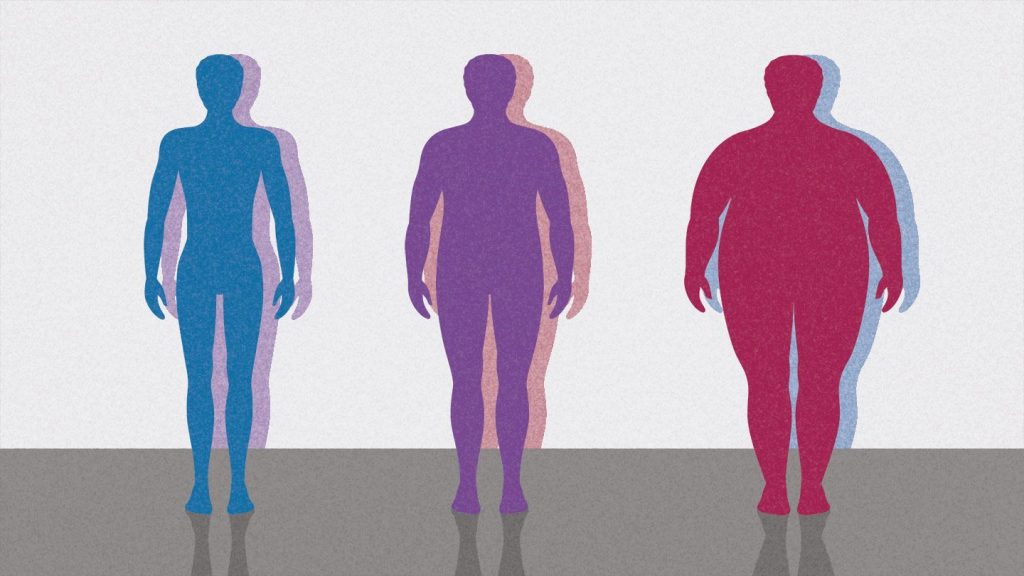Obesity and a high-fat diet may accelerate brain aging, lead to cognitive decline
Globally, obesity is becoming a bigger problem for public health. The World Health Organization (WHO) estimates that 16% of people worldwide suffered from obesity in 2022. According to the Centers for Disease Control and Prevention (CDC), 41.9% of Americans were obese in 2020, indicating a significantly higher prevalence. Younger people are becoming more and more concerned about the condition; according to the WHO, 160 million children and adolescents worldwide will suffer from obesity in 2022. An individual who is overweight is more likely to experience health issues, and the risks rise with weight. Obesity raises the possibility of numerous illnesses, such as:
Obesity may also hasten brain aging and cause cognitive decline, according to a new study that will be presented at the American Physiology Summit in Long Beach, California, April 4–7. The study’s findings have not yet been published in a peer-reviewed scientific journal. The body, including the cerebrovasculature, is known to be affected by a variety of systemic inflammatory reactions that are triggered by diet-induced obesity. The persistent inflammatory state that obesity produces is one of the main reasons it may cause senescence in the cerebrovasculature.
Obesity damages brain blood vessels: Research indicates that obesity is linked to a decline in cognitive function. Although the precise mechanism is unknown, inflammation, a known effect of obesity, may have an impact on cognitive function because being obese in midlife is linked to a higher risk of dementia and a decline in executive function when compared to a normal weight8,35. However, other studies have found that late-life obesity is associated with a lower risk of dementia and improved cognition. Obese people’s adipose tissue secretes a variety of bioactive substances, such as pro-inflammatory cytokines, which can travel throughout the body and impact distant organs like the brain.
A high-fat diet consisting primarily of omega-6 and SFAs has been linked to poorer performance on a cognitive task in human epidemiological studies. Moreover, research indicates that a diet high in SFAs and TFAs is linked to a higher risk of Alzheimer’s disease. Several factors can age-related brain damage that results in cognitive impairments. These variables include head trauma, toxins like alcohol, too many stress hormones, cerebral ischemia, and the onset of degenerative dementias like AD. The average age of an overweight person’s brain was eight years older than that of a normal-weight person, according to research from the University of Pittsburgh, and overweight people had 4% less brain volume.
A retrospective study conducted in China found that a high energy intake of fat and protein and a low energy intake from carbohydrates are associated with cognitive decline in later life (23). Low levels of omega-3 polyunsaturated fats in the diet may also be linked to memory loss. The main factor contributing to cognitive impairment is age. A person’s family history, lack of physical activity, and illnesses like diabetes, drugs, toxins, Parkinson’s disease, heart disease, stroke, brain injury, and brain cancer are additional risk factors.
According to research, maintaining brain health may be aided by combining physical exercise, mental and social stimulation, and a healthy diet. Reading books, learning an instrument, and engaging in other activities have all been linked to the preservation of brain function, according to studies. Social interaction can help maintain mental health and slow the aging process. It can also make life more fulfilling. You may be able to perform better with memory training and other cognitive training.
These inflammatory signals can accelerate the aging of vascular cells and the onset of senescence in the brain, which makes it more difficult for the vessels to control blood flow and react to brain activity, the speaker continued. Numerous research findings indicate that individuals with obesity or a high body mass index (BMI) experience decreased cerebral blood flow, a finding that may be linked to compromised cognitive function, especially in the elderly. In this most recent study, the researchers examined the impact of obesity and a high-fat diet on mice’s brain blood vessels and cognitive function. They fed a 60 percent fat or 10 percent fat diet to novel transgenic mice (p16-3MR mice, which allow for the visualization and selective elimination of senescent cells).
Researchers compared the endothelial cells in the blood vessels of the mice on the high-fat diet to those on the regular diet and found that the former were more prone to senescence a condition in which cells cease to divide but do not die, releasing chemicals that may cause inflammation. The founder of Dietitian Insights and registered dietitian nutritionist Kelsey Costa stated, “The results of this animal study suggest that obesity and poor eating patterns lead to the build-up of blood vessel damage, which reduces oxygen delivery to particular brain regions and may ultimately result in cognitive decline.
In mice fed a high-fat diet, the radial arm water maze test revealed reduced cognitive function in addition to an increase in senescent endothelial cells. Researchers used Navitoclax/ABT263, a medication that specifically destroys senescent cells, on obese older mice fed a high-fat diet to examine the importance of these cells. The mice’s cognitive function improved after treatment. Even though the study was done on mice, it provides us with helpful suggestions regarding possible human outcomes. The removal of senescent cells improved the brains of obese mice, which is exciting because it suggests a potential treatment for brain issues associated with obesity. Navitoclax-induced senescent cell elimination in the brains of obese mice appeared to enhance brain vasculature, suggesting that this approach may be useful in treating obesity-related cognitive decline.
Obesity may accelerate the aging and senescence of brain blood vessel cells. If a connection is found between obesity and cellular senescence, this could lead to new research directions that address therapeutic approaches to stop or delay the onset of senescence and potentially improve the health problems associated with obesity, such as cognitive decline. The findings demonstrated that in comparison to normal-weight mice fed a standard diet, mice fed a high-fat diet had, after three months, increased cellular senescence and decreased density of healthy blood vessels in the brain, along with evidence of impaired learning in a maze test. Furthermore, by employing Navitoclax, an experimental cancer medication that targets and eliminates senescent cells specifically, the researchers were able to enhance the characteristics of the brain vasculature.
Medications that have been suggested by doctors worldwide are available here
https://mygenericpharmacy.com/index.php?cPath=77_271

